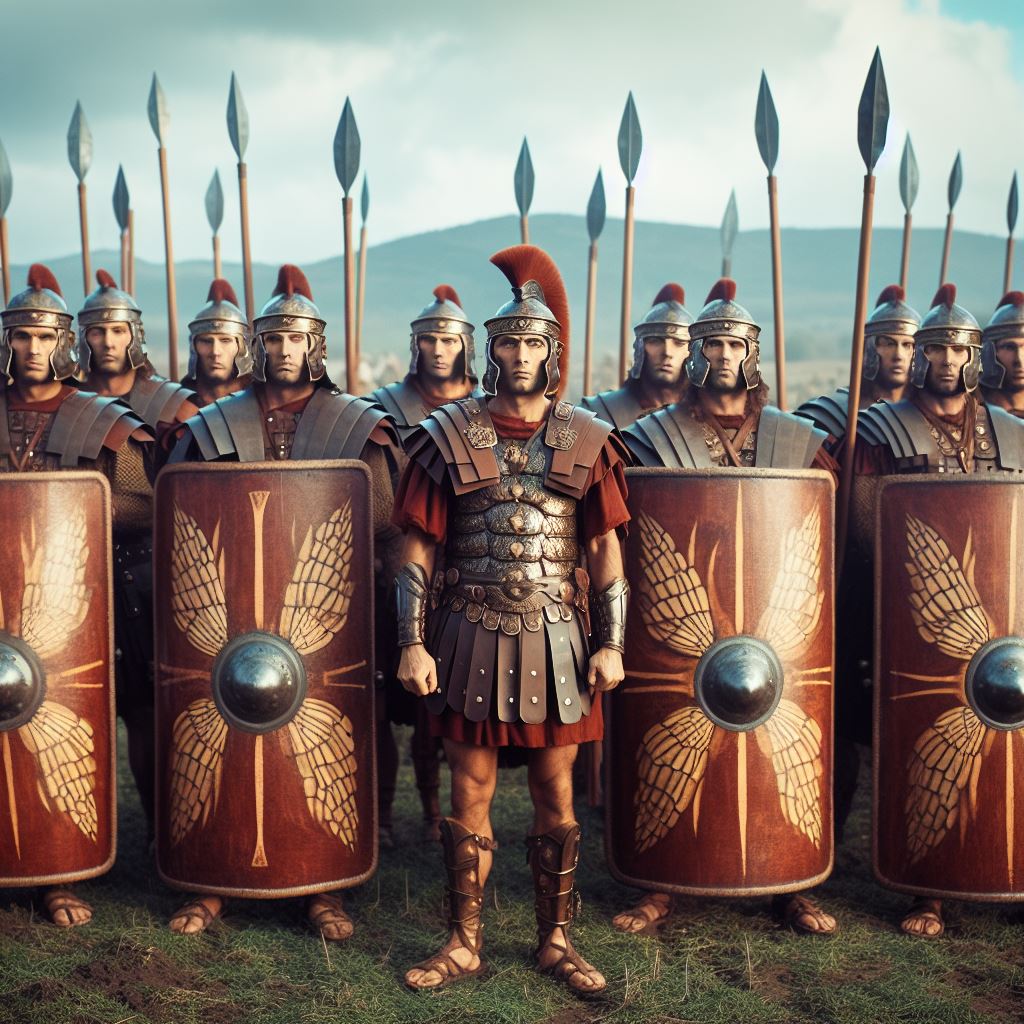In the epic saga of ancient warfare, few artifacts evoke as much intrigue and admiration as Roman shields. These iconic symbols of power and resilience not only served as protective barriers on the battlefield but also carried deep cultural and tactical significance. Let’s embark on an exhilarating journey through the annals of history as we uncover the secrets of Roman shields – their construction, design, and enduring legacy.
Forging Defense: The Craftsmanship Behind Roman Shields
Picture a bustling Roman workshop, alive with the sound of hammers striking metal and the scent of freshly cut wood. Here, skilled artisans meticulously crafted the scutum, the famed Roman shield. Constructed from layers of sturdy wood, often reinforced with leather and metal fittings, these shields were not just defensive tools but works of art. Each shield bore the mark of its maker, a testament to the ingenuity and craftsmanship of ancient Roman artisans.
Iconography in Warfare: The Symbolism of Roman Shields
Beyond their practical utility, Roman shields were adorned with intricate designs and symbols, each carrying its own story and significance. From the majestic eagle, symbolizing Roman strength and dominance, to the fearsome imagery of mythological creatures, these symbols struck fear into the hearts of Rome’s enemies and instilled pride in its soldiers. The shield became more than just a piece of equipment – it was a powerful emblem of Roman identity and unity on the battlefield.

Tactical Mastery: The Role of Roman Shields in Warfare
In the heat of battle, Roman soldiers wielded their shields with precision and skill, employing time-tested tactics to outmaneuver their foes. The formation of the testudo, or “tortoise,” saw soldiers lock their shields together, creating an impenetrable wall against enemy projectiles. This formation allowed Roman legions to advance steadily, protected from harm, and played a crucial role in their military victories. With their shields held high, Roman warriors stood as an unyielding bulwark against the tide of war.
Beyond the Battlefield: The Legacy of Roman Shields
While their primary purpose was in warfare, the influence of Roman shields extended far beyond the battlefield. These shields served as symbols of status and honor, often displayed proudly in triumphal processions and ceremonial events. Even in times of peace, the sight of a Roman shield inspired awe and reverence, a reminder of the empire’s might and glory. Centuries later, the legacy of Roman shields lives on, their iconic design and strategic principles influencing military tactics and equipment to this day.